Custom Air Cooled Heat Exchanger
1. Air Cooled Heat Exchanger Components
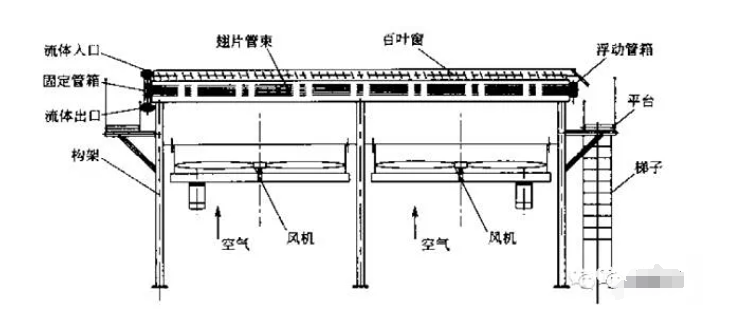
Basic Components of an Air Cooled Heat Exchanger:
1. One or more finned tube bundles, through which the fluid to be cooled or condensed passes, while air flows outside the tubes to cool the fluid.
2. One or more axial fans, which drive the air flow.
3. Frame.
4. Accessories, such as louvers, steam coils, ladders, and roof platforms.
Fin Tube Bundle
The fin tube bundle consists of finned tubes, a tube box, and a frame. The ends of the tubes are expansion-jointed to the sides of the tube box. The upper and lower sides of the tubes are connected to the inlet and outlet pipes. The tubes are arranged in a triangular pattern and can be installed in various configurations, including horizontal, inclined, and vertical.
Air Cooled Heat Exchanger Fin Tube Type
a. L type finned tube

Application and Features: Maximum allowable medium temperature ≤ 150°C; Maximum allowable operating pressure ≤ 32 MPa for steel tubes and ≤ 2.5 MPa for aluminum tubes; Fin tube lengths of 12m, 10.5m, 9m, 6m, 4.5m, and 3m; Low price and most widely used.
Disadvantages: Not suitable for applications with high vibration; Short service life in wet air cooling.
b. LL-type finned tubes
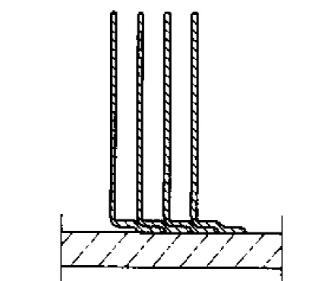
Application and Features: Maximum allowable medium temperature 170°C; Better atmospheric corrosion resistance than L-type finned tubes, suitable for wet air cooling; Better heat transfer performance than L-type finned tubes; Same fin tube length as L-type finned tubes.
Disadvantages: Slightly more expensive than L-type finned tubes.
c. Embedded G-type finned tubes
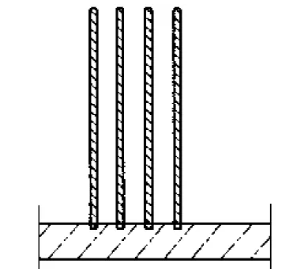
Application and Features: Maximum allowable medium temperature 350°C; Maximum allowable operating pressure for steel tubes ≤ 3.2 MPa; Better heat transfer performance than L-shaped finned tubes; Fin length is the same as L-shaped finned tubes.
Disadvantages: Poor corrosion resistance inside and outside the tube; Stress concentration on the tube wall, not suitable for medium or high pressure applications.
d. KLM finned tubes

Maximum medium temperature allowed: 250°C. Longitudinal knurling is added to the L-shaped fin tube wall and the folded edge. This improves the bond between the fin and the steel tube and its ability to withstand sudden changes in temperature. Heat transfer efficiency is slightly higher than the L-shaped tube (approximately 6% to 7%).
e. Bimetallic extruded fin tube
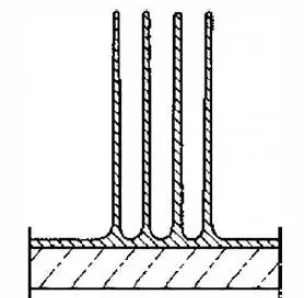
Application and Features: Maximum allowable medium temperature 280°C; Maximum operating pressure (inner) of rigid tubes 32 MPa; Corrosion-resistant inner tubes available; Heat transfer performance between inlaid and wound-fin types; Suitable for use in power machinery subject to high vibration.
Disadvantages: Expensive; Requires high manufacturing technology; Heavy weight.
f. Hot-dip galvanized elliptical and rectangular finned tubes
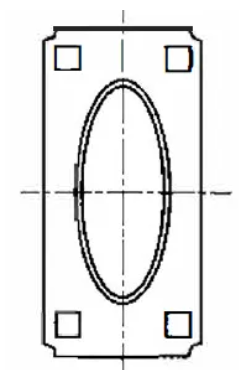
Applications and Features: 25% higher heat transfer performance than round finned tubes; 10%-30% lower external resistance than L-shaped finned tubes; 20% smaller footprint than round tubes; and significantly lower energy consumption.
Disadvantages: Expensive; complex manufacturing steps and multiple manufacturing steps.
Air Cooled Heat Exchanger Tube Box
Common air cooled heat exchanger housing types are as follows.
A. Threaded Plug Air Cooled Heat Exchanger Tube Box
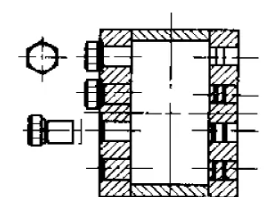
Applications and Features: Widely used for gasoline, kerosene, and other light oils, solvents, and various applications with low media contamination coefficients; pressure range ≤ 20 MPa.
Disadvantages: Requires a large number of plugs and washers, requiring significant processing effort.
B. Air Cooled Heat Exchanger Box with Removable Cover

Applications and Features: Suitable for applications with high fouling coefficients; Suitable for media with condensation-prone conditions; Design pressure ≤ 6.4 MPa; Type A covers do not require disassembly of pipeline flanges; Type C is commonly used on stainless steel or aluminum air-cooled tube bundles.
Disadvantages: The flat cover is heavy and difficult to inspect; Requires high processing requirements to ensure a tight seal.
C. Manifold-Type Air Cooled Heat Exchanger Tube Box

Applications and Features: For high-pressure applications, design pressure ≤ 32 MPa; for hydrogen-containing media; for manifolds made of stainless steel pipes or other corrosion-resistant materials.
Disadvantages: Requires high welding requirements.
D. Forged Flange Air Cooled Heat Exchanger Manifold
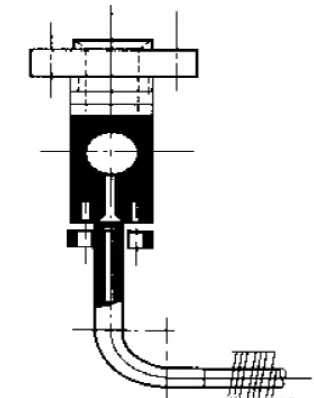
Applications and Features: Suitable for high-pressure applications; finned tube replacement is extremely convenient during maintenance, and the tube box has a long service life.
Disadvantages: High processing volume and precision requirements; high initial investment costs.
2. Air Cooled Heat Exchanger Fan
Fans generally require low head pressure and high flow rates. Air propeller-type axial flow fans are commonly used and are usually installed vertically.
By Air Cooled Heat Exchanger Fan Operation Mode
a. Forced Draft: Air first passes through the fan and then through the tube bundle.
b. Induced Draft: Air first passes through the tube bundle and then through the fan.
By Air Cooled Heat Exchanger Fan Adjustment Mode
a. Angle Adjustment: Angle adjustment during shutdown, angle adjustment without shutdown, and automatic angle adjustment.
b. Speed Adjustment: Variable frequency speed regulation.

3.Air Cooled Heat Exchanger Frame
The air cooler frame should have good stability. It is usually constructed of steel sections and thin steel plates, with cold-formed special-shaped steel sections currently being the most common. The frame dimensions should match the tube bundle and fan dimensions. When selecting a frame model, please note the following:
1. Only tube bundles of the same length can be placed on the same frame.
2. When placing tube bundles of different widths on the same frame, they do not need to cover the entire width of the frame. Any gaps should be sealed with sealants.
3. Air cooler tube bundles of different lengths are generally not placed together and should be separated into different groups or platforms.
4. Forced draft frames are self-contained. Induced draft frames are often constructed using tube bundle frame side beams and cannot be independently supported.
4. Air Cooled Heat Exchanger Louvers
Louvres can be installed in three ways:
Forced Draft: Louvers are installed at the tube bundle outlet.
Induced Draft: Louvers are installed at the fan outlet.
Hot Air Recirculation: Louvers are installed in the corresponding air duct.
Louvres can be adjusted manually or automatically
Manual: The louver opening degree is manually adjusted using a mechanical device.
Automatic: The louver opening degree is adjusted using an automatic instrument control system (AICS) that operates a mechanical actuator on the louver.
Louvre opening methods also include two types: split-open and sequential
Synchronous: The louvers open in the same direction of rotation, and each louver opens to the same degree.
Split-open: Adjacent louvers open in opposite directions of rotation, and each louver opens to the same degree.

The split-type operating linkage system is more complex than the sequential-opening type, but offers better adjustment performance. The airflow rate curve as the blades open more closely resembles the leading edge, making operation easier.
